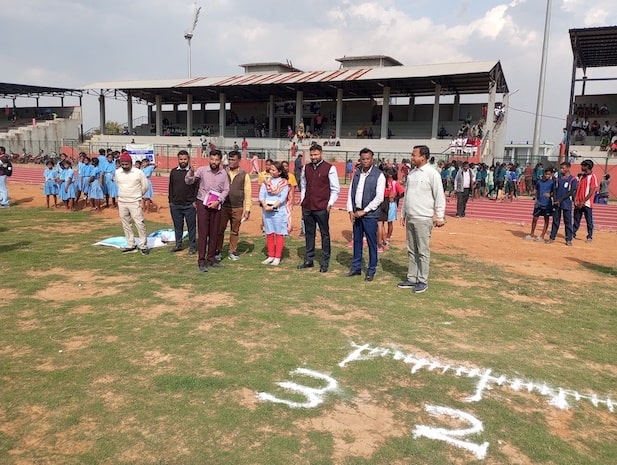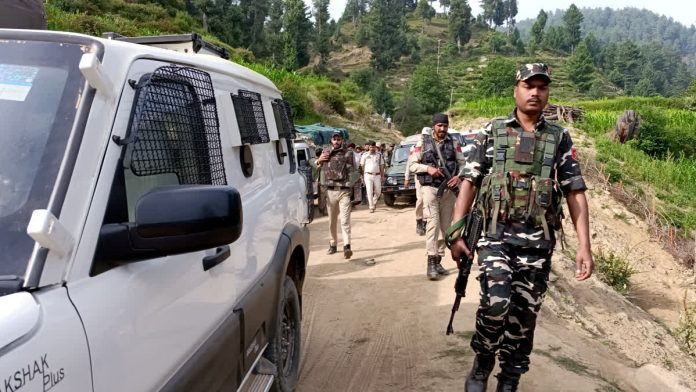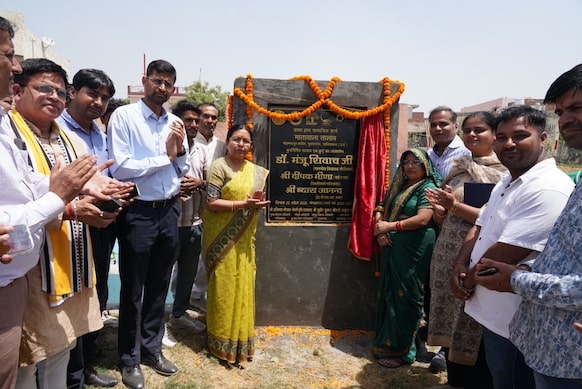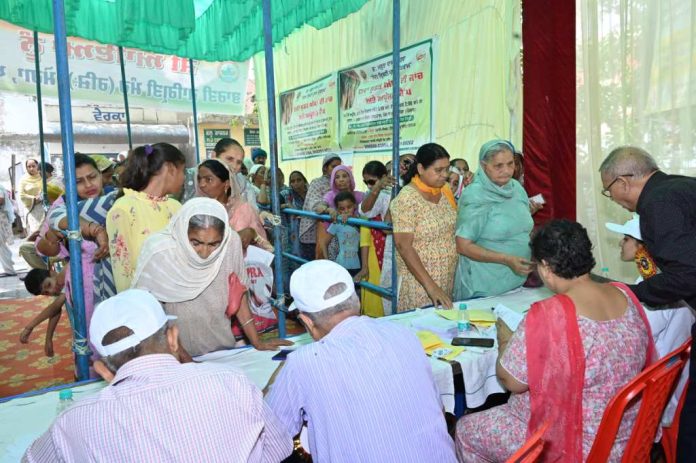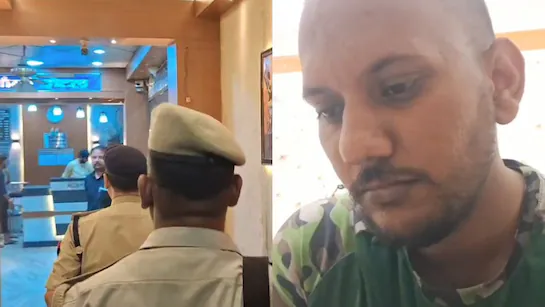Terrorists Target Tourists in Pahalgam’s Baisaran Valley, 27 Dead; Several Injured
A serene afternoon in one of Kashmir’s most cherished tourist spots turned tragic today after terrorists opened fire on a group of visitors in the upper reaches of Baisaran Valley, Pahalgam. Initial reports suggest 27 dead and at least five to seven tourists are reported to have sustained injuries in the attack.
According to officials, the assailants, believed to be in camouflage, targeted a group of tourists in Baisaran a scenic meadow only reachable by foot or horseback. Gunshots were first heard in the area around noon, following which security forces and emergency medical personnel rushed to the scene.
This suspected terror attack comes at a sensitive time for the region, coinciding with the beginning of peak tourist season in Kashmir and ongoing preparations for the annual Amarnath Yatra. The 38-day pilgrimage is scheduled to commence on July 3, via two main routes: the 48-km trail through Pahalgam in Anantnag and a 14-km route via Baltal in Ganderbal. Both tracks are expected to see thousands of pilgrims, heightening concerns about security in the region.
Injured Tourists Are From Rajasthan
Initial reports indicate that some of the injured tourists may be from Rajasthan. The Jammu and Kashmir Police have confirmed that at least four to five people were hurt, including some locals.
Security agencies suspect that the attackers aimed to create panic and derail the upcoming yatra by targeting areas popular with tourists. The operation to locate and neutralise the perpetrators is currently underway, and the entire Baisaran Valley has been cordoned off.
The Jammu and Kashmir National Council party also responded swiftly to the incident. Party spokesperson Umesh Talashi posted on X (formerly Twitter), confirming the attack and requesting immediate intervention from Chief Minister Omar Abdullah and other state leaders.
Victim’s Pleads for Help
A distraught woman, overwhelmed with emotion, desperately begged for help to save her husband after witnessing a horrifying shooting incident targeting tourists in Pahalgam, Jammu and Kashmir, which claimed one life.
Through her sobs, she repeatedly cried out, “Please save my husband,” her remaining words lost in anguish as she struggled to speak through her tears.
Tension Rise Amid Infiltration Fears
The broader security context in the Union Territory has remained tense in recent weeks. Heightened alerts had already been issued following provocative comments from Pakistan’s Army Chief, raising fears of cross-border infiltration attempts. Union Home Minister Amit Shah, during a recent visit to Jammu and Kashmir, had emphasised a zero-tolerance policy towards terrorism and instructed law enforcement agencies to intensify surveillance especially in vulnerable zones like pilgrimage routes.
Tourism officials and security personnel now fear that the incident might impact the state’s tourism prospects and disrupt upcoming religious gatherings. A senior police officer described the attack as a “deliberate provocation meant to instill fear,” but reaffirmed that authorities are prepared to ensure the safety of tourists and pilgrims.
As the rescue and investigation operations continue in Pahalgam, officials have urged the public to remain calm and avoid speculation until more verified details emerge.
CSR News: Revival of 24,000 KL Local Pond in Ghaziabad; Moving Closer to Achieving Water Positivity
Dabur India Limited, a leading name in natural and Ayurvedic healthcare, today announced the successful revival and rejuvenation of the Matawala pond and community well in Muradnagar block of Ghaziabad, Uttar Pradesh. The revived water body was dedicated to the community on World Earth Day today.
The revival of this water body, which now has a capacity to collect and harvest over 24,570 KL of rainwater, was undertaken as part of Dabur’s ongoing Corporate Social Responsibility (CSR) efforts and takes the company closer to its ambitious mission to become Water Positive by 2030.
The rejuvenation project involved extensive efforts to restore the pond’s ecological balance, improve water quality, and enhance biodiversity. The project included deep digging and desilting of the pond, construction of a boundary wall, and plantation around the pond to strengthen the banks and create a sustainable water management system. An improved and natural water drainage system has also been created to filter plastic waste.
The rejuvenated pond was inaugurated by Modinagar MLA Ms Manju Shiwach in the presence of Ghaziabad District Chief Development officer Mr. Abhinav Gopal. The restoration work was undertaken through Dabur’s CSR arm Jivanti Welfare and Charitable Trust, in partnership with Purva Foundation.
Speaking on the occasion, Dabur India Limited Chief Executive Officer Mr. Mohit Malhotra emphasized the importance of community-level programs for water conservation and management. “At Dabur, we recognize the critical importance of water sustainability in mitigating environmental challenges and ensuring the resilience of our communities. By rejuvenating this local pond, we are not just restoring a natural resource; we are revitalizing an entire community. This initiative aligns seamlessly with our overarching commitment to achieve water positivity by 2030.”
This revived pond is set to benefit over 150 families in the village. This pond will help increase the groundwater level and facilitate irrigation of nearby agricultural land. This will lead to enhanced crop yield for local farmers and a subsequent increase in farmer income. “Dabur’s commitment to sustainable development and community welfare shines through initiatives like these, as the company strives to create a better, brighter future for all. The rejuvenation of the pond in Ghaziabad is a testament to Dabur’s dedication to conserving and augmenting water resources for future generations,” Dabur India Limited CSR Head Mr. Byas Anand said.
Disclaimer: This media release is auto-generated. The CSR Journal is not responsible for the content.
Flute, Tabla, Violin, and Harmonium to make Traffic Jams Entertaining in India
Union Road Transport and Highways Minister Nitin Gadkari has once again proposed a law to mandate using the sounds of Indian musical instrument as vehicle horns. Speaking at an event on Monday, Gadkari said that he aims to make vehicle horns across India more pleasant and hence the sounds of instruments like flute, tabla, violin, and harmonium would be a good idea.
“I am planning to make a law that horns of all vehicles should be in Indian musical instruments so that it is pleasant to hear. Flute, tabla, violin, harmonium,” Gadkari was quoted as saying by news agency PTI.
Similar proposal by Gadkari earlier
This is not the first time that Gadkari has proposed such a law in the country. In 2021, the minister had said he was planning to introduce a law to make sound of Indian musical instruments mandatory as a horn for vehicles.
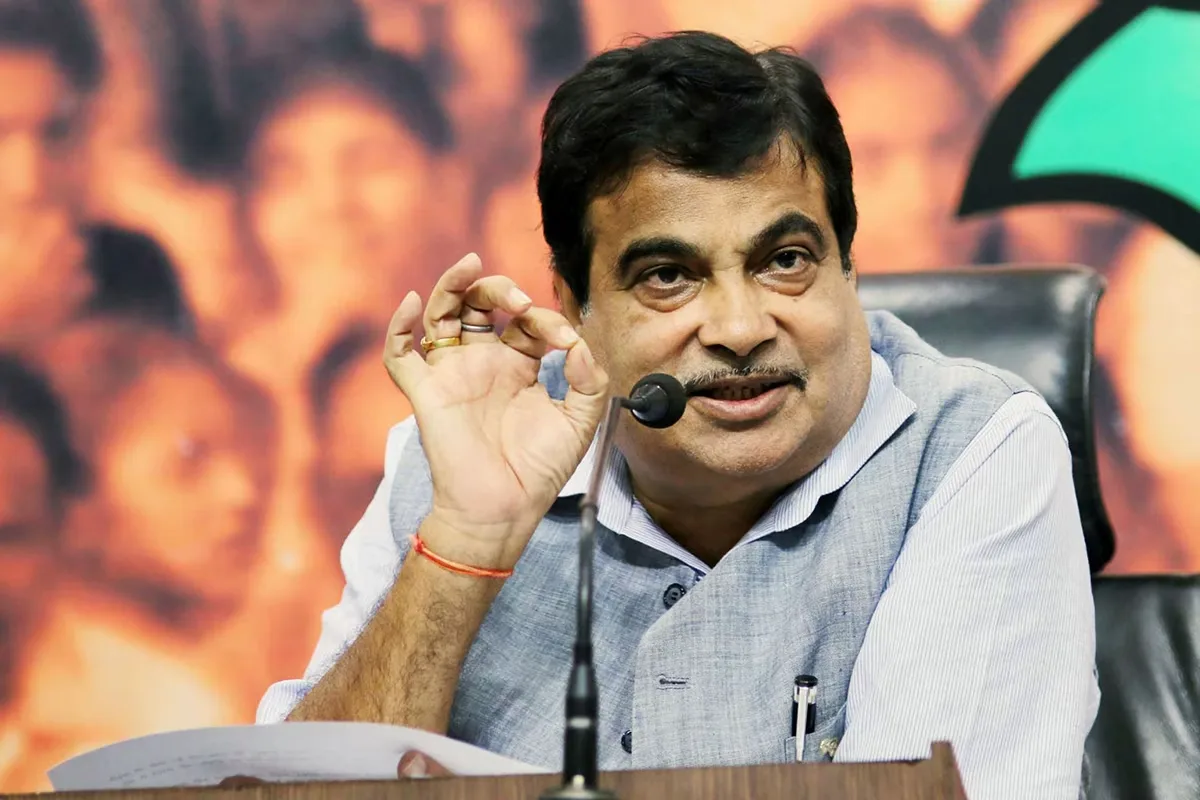
India earning significant revenue from automobile exports
Gadkari also highlighted the strength of India’s automobile industry, noting that the country earns significant revenue from the export of two-wheelers and cars. He shared that the industry, valued at Rs 14 lakh crore in 2014, has now grown to Rs 22 lakh crore.
Furthermore, he announced that India has overtaken Japan to become the third-largest automobile market globally, after the United States and China.
Govt of India trying to reduce air pollution caused by transport sector
Gadkari also highlighted that the transport sector is responsible for 40% of the country’s air pollution. To combat this, the central government is actively promoting the adoption of green and biofuels such as methanol and ethanol for vehicles.
Kolkata: Terminated SSC Staff Vow Indefinite Protest Until Reinstatement or Publication of Genuine Candidate List
Kolkata, India: A fresh wave of protests erupted in Kolkata on Monday as terminated teachers and non-teaching staff gathered outside the West Bengal School Service Commission (SSC) office and near Derozio and Nivedita Bhawan buildings, demanding either immediate reinstatement or the release of a definitive list distinguishing genuine candidates from those allegedly appointed through irregular means.
Meeting with SSC Yields No Resolution
Despite a meeting between eight representatives of the aggrieved group and the SSC Chairperson in the evening, no concrete resolution was reached. According to the representatives, SSC officials stated that candidates who had progressed to the third round of counselling were considered “valid and genuine.” However, the assurance failed to pacify the protesters.
One teacher, speaking on condition of anonymity, accused the SSC of attempting to “divide and rule” in an effort to dilute the protest movement. “This is nothing but an attempt to break our unity. We are determined to continue until justice is served,” the teacher said.
Heightened Security Amid Escalating Tensions
The ongoing demonstration prompted the deployment of additional police personnel to manage the growing crowd and maintain law and order. Tensions escalated further after a late evening SSC statement to the media reiterated the commission’s intent to comply with Supreme Court directives and affirmed that the salaries of those who had rendered service would be disbursed as per the current system.
This statement, however, further agitated the protesters. A confrontation between police and demonstrators ensued, leading to a tense standoff.
Protesters Demand Reinstatement or Compensation
A protesting teacher demanded compensation of ₹2 crore if the government fails to reinstate them. “Let the Chief Minister and Education Minister make it official—either give our jobs back or compensate us adequately. We will not budge until a proper list is published,” the teacher asserted.
Gobindo Sarkar, another terminated teacher, described the agitation as a “genuine protest,” holding the state government accountable for their termination. Fellow protester Amit Mondal echoed the sentiment, accusing the administration of resorting to divisive tactics.
Promise of List Unfulfilled
It is worth noting that State Education Minister Bratya Basu had previously assured that the list separating genuine and tainted candidates would be released on April 21. However, as of this report, no such list has been published.
Solidarity from Medical Fraternity
Solidarity also poured in from the West Bengal Junior Doctors Forum, known for leading protests at RG Kar Medical College. They extended support by providing food and water to the demonstrators.
Protest to Continue Indefinitely
The protesting teachers have declared that their sit-in demonstration will continue indefinitely until their demands are met either through reinstatement or the official publication of the list of legitimate candidates.
India–US Trade Negotiations Advance as Modi and Vance Finalise Terms of Reference
India and the United States have taken a significant step forward in their economic partnership with the formal finalisation of the Terms of Reference (TOR) for negotiations on a comprehensive Bilateral Trade Agreement (BTA). This development follows a high-profile meeting between Prime Minister Narendra Modi and US Vice President JD Vance at the Prime Minister’s official residence in New Delhi, marking a pivotal moment in the ongoing efforts to deepen trade ties between the two nations.
The meeting, which lasted nearly two hours, was described as both cordial and productive. Both leaders welcomed the “significant progress” made in trade talks, with official statements from both sides highlighting the importance of this milestone. According to the US Trade Representative’s Office, the finalisation of the TOR builds upon the groundwork laid since Prime Minister Modi’s visit to Washington in February 2025, when he and President Trump agreed to launch negotiations for a new trade pact.
The TOR sets out a clear framework and roadmap for the upcoming negotiations, aiming to address long-standing issues such as tariff barriers, market access, and the need for greater reciprocity in the trade relationship. US Trade Representative Jamieson Greer noted that while the talks have made substantial headway, there remains a “serious lack of reciprocity” in the current trade dynamics, which the new negotiations hope to rectify by opening new markets for American goods and addressing practices perceived as unfair to US workers.
Strategic Goals and Broader Implications
The finalisation of the TOR comes at a critical juncture. The Trump administration’s tariff regime, which has been temporarily paused, looms in the background as both countries seek to avoid escalation and instead focus on mutually beneficial outcomes. The United States remains India’s largest trading partner, and both sides have set an ambitious target of more than doubling bilateral trade to $500 billion by 2030. Achieving this would not only enhance economic ties but also strengthen diplomatic and strategic cooperation in the Indo-Pacific region.
Both governments have expressed their commitment to concluding an interim trade deal even before the comprehensive agreement is signed, with a tentative timeline aiming for finalisation by September or October this year. Special Secretary Rajesh Agrawal, one of India’s top trade negotiators, is set to travel to the US for in-person talks, underscoring the urgency and seriousness with which both sides are approaching the process.
The broader context of the negotiations also includes cooperation in critical technologies, defence, energy, and people-to-people exchanges. The BTA is expected to create new opportunities for workers, farmers, and entrepreneurs in both countries, promoting job creation and supply-chain integration. The agreement is being framed as a “new and modern trade agreement” that reflects the evolving economic priorities of both nations, guided by India’s vision of ‘Amrit Kaal’ and America’s aspiration for a ‘Golden Age’.
In summary, the finalisation of the Terms of Reference for trade negotiations between India and the US marks a decisive step towards a more balanced and dynamic economic partnership. As negotiations proceed, the focus will be on achieving a fair, reciprocal, and forward-looking agreement that benefits citizens and businesses on both sides of the globe.
ED Summons Actor Mahesh Babu in ₹100 Crore Money Laundering Probe Involving Real Estate Firms
Telugu superstar Mahesh Babu has been summoned by the Enforcement Directorate (ED) to appear for questioning on April 28, 2025, in connection with a money laundering investigation involving Hyderabad-based real estate entities Sai Surya Developers and the Surana Group.
The agency is probing financial transactions between the actor and Sai Surya Developers, which allegedly paid him Rs 5.9 crore for promotional campaigns. Of this amount, Rs 3.4 crore was transferred via formal banking channels, while Rs 2.5 crore is believed to have been handed over in unaccounted cash, sources said. The legality and origin of this cash component have become a central concern in the ongoing probe.
Though Mahesh Babu has not been named an accused, the ED is looking into whether the payments made to him could be linked to funds collected from investors who were allegedly defrauded by the real estate firms. According to officials, the actor’s endorsement of these firms’ projects is under scrutiny as part of the broader financial investigation.
Multiple Complaints Filed with Telangana Police
The case originally emerged from multiple complaints filed with the Telangana Police, which triggered formal FIRs against key individuals including Narendra Surana, Director of Bhagyanagar Properties Ltd., and K. Sathish Chandra Gupta, the owner of Sai Surya Developers. These developers are accused of deceiving homebuyers by collecting substantial advances for residential plots and failing to honor commitments.
On April 16, ED officials launched a series of raids across four properties in Hyderabad and Secunderabad, including premises in Madhapur, Bowenpally, and Jubilee Hills. These searches resulted in the seizure of significant evidence, including incriminating documents and unaccounted cash totaling Rs 74.5 lakh. The documents reportedly reveal details of fraudulent financial operations and false agreements with potential buyers.
The financial misconduct, as per the ED’s preliminary findings, involved unauthorised land layouts, reselling the same plots to different clients, and accepting payments without executing legitimate contracts. These tactics, the agency believes, were used systematically to generate illicit funds which were subsequently laundered and diverted.
ED Traces Rs 100 Cr Fraud in Realty Scam
The probe has so far uncovered undisclosed transactions exceeding Rs 100 crore, suggesting an elaborate scheme of defrauding investors and laundering proceeds through various fronts. The money trail, the ED says, is being traced to determine the extent of the scam and the individuals or entities that may have benefited from it.
A senior official close to the investigation stated that while Mahesh Babu is not a primary target of the case, his testimony will help establish whether he was aware of the financial irregularities when he endorsed the group’s projects. The agency is currently focusing on the cash element of his remuneration, which could potentially be linked to proceeds of crime.
The ED has invoked provisions of the Prevention of Money Laundering Act (PMLA), 2002, in this case, with further questioning and forensic examination of seized materials expected in the coming weeks.
CSR initiative offers free eye checkups to 635 people during the 15th Biannual Eye Camp at Moga, Punjab
Punjab, India: Staying true to its commitment to improving the lives of people, Bry-Air, the flagship company of the Pahwa Group, organized the 15th Biannual Eye Camp. The camp was conducted on 20th April, 2025, at Mathra Das Civil Eye Hospital at Moga, Punjab, as part of the company’s CSR activity.
The event was jointly inaugurated by Mrs. Anandita Pahwa, Head CSR, Pahwa Group and Mr. Sanjeev Saini, Chief Patron, Bhartiya Jagriti Munch, Moga. The event was also attended by prominent personalities such as Dr. Amandeep Kaur Arora, MLA, Moga; Mrs. Indu Puri, eminent social worker, Moga, Dr. Deepek Kochhar, Chief Founder, Bhartiya Jagriti Manch, Moga.
Considering that people of the village have limited access to eye checkups, the company conducted the camp to provide free checkups, medicines, spectacles, and surgeries to the locals. Overall, the event registered a total of 635 attendance, visited by locals of Dhalleke, Talwandi, Landheke, Jalalabad, Dosanjh, Lohara, Bughipura, Dala, Dhurkot, Naharwala, Mehna, Chugawan, Kapure, Rauli, Singhawala, Mothanwala, Bukanwala, Ghall Kalan, Rattian and Dunnek villages. As part of the initiative, 78 attendants were diagnosed with cataract surgeries. In addition to this, 841 medicines and around 300 spectacles were also distributed to support the cause.
Bry-Air conducts the eye camp biannually to continue the philanthropic work of Rai Bahadur Dr. Mathra Das Pahwa aimed at helping people gain their eyesight. Paying tribute to him, till date the company has organized 14 Eye Camps at Moga, facilitating OPD for 10092 visitors over the years. During the period, cataract surgeries were successfully performed on 1245 people identified with the disease. Along with this, 4096 free spectacles and 14853 free medicines have also been distributed throughout the 14 eye camps.
Carrying forward the legacy of Rai Bahadur Dr. Mathra Das Pahwa, over the years, the company has conducted over 126 camps, where it has given treatment to 44242 people along with performing free cataract surgeries on 3844 patients. Distributing free spectacles to approximately 27337 and free medicines to 35559, Bry-Air stays true to its commitment to alleviating issues related to eye in the villages.
In the course of time, the company has successfully impacted the lives of more than 94,000 beneficiaries with the help of robust CSR activities initiated in the year 2011. By conducting CSR activities, Bry-Air is determined to create a positive impact on society by focusing on three key pillars, which are Vision, Education, and Environment. They aim at holistic development of the society by enabling sustainable livelihoods for underprivileged, specially-abled individuals, women and farmers in the community. At the same time, by reinforcing education, the company continuously strives to foster skill development, inculcate good health and hygiene and create job opportunities for the people.
Speaking on the occasion, Anandita Pahwa, Head CSR-Pahwa Group said, “The commencement of the 15th Biannual Eye Camp is a testament to our commitment to elevating the lives of the people. Working relentlessly towards the goal of restoring vision for the villagers, we are determined to drive the well-being of the community. By regularly organizing the eye camps, we are continuously inching towards our goal of improving eye care accessibility for the locals of the region.”
Disclaimer: This media release is auto-generated. The CSR Journal is not responsible for the content.
CSR News: HDFC Bank Parivartan to empower 1,000 villages with access to clean, renewable energy solutions by 2025
Mumbai, India: As the world marks Earth Day 2025, HDFC Bank reaffirms its commitment to sustainable progress by announcing a significant milestone under its flagship CSR initiative, Parivartan. The Bank will enable access to clean and renewable energy solutions to over 1,000 villages across India by 2025—empowering rural and semi-urban communities through innovative solar-powered infrastructure, awareness, and local partnerships.
The Bank’s work in renewable energy aligns with this year’s Earth Day theme, Our Power, Our Planet, which calls for global acceleration of clean energy adoption. Under its pillar of Natural Resource Management, HDFC Bank Parivartan has installed over 61,655 solar streetlights across 22 states. It has also launched a range of solar initiatives that are enhancing rural life—from street safety to drinking water, farming, food processing and livelihood enhancement.
Recognising that infrastructure alone is not enough, HDFC Bank has developed Solar Shiksha, an awareness initiative designed to demystify solar energy adoption in semi-urban India. Solar Shiksha addresses the lack of awareness, process barriers, and myths that often prevent adoption. The programme provides crucial education and practical demonstrations as well as information on government schemes and subsidies. By delivering educational materials in multiple regional languages, the program ensures accessibility and understanding across diverse communities
To date, over 90 awareness workshops have been held across states such as Goa, Karnataka, Haryana, Delhi, Jammu & Kashmir, Maharashtra, Telangana, and Chhattisgarh—impacting over 3,000 individuals across 450+ communities. The programme reaches schools, public hospitals, orphanages, farming groups and old-age homes—places where solar can directly improve quality of life. It promotes the adoption of a wide range of solar solutions, including solar pumps, panels, cookers, stoves, streetlights, and water heaters.
Speaking about its initiatives, Kaizad Bharucha, Deputy Managing Director, HDFC Bank, “At HDFC Bank, we believe that the path to a sustainable future lies in inclusive development. Our solar energy initiatives under Parivartan are designed to bring real, measurable change—lighting up streets and homes, while also creating opportunities. By focusing on awareness, innovation, and community ownership, we are investing in a future that is equitable, resilient and green. On Earth Day, we reaffirm our commitment to scaling up such impactful models across India.”
“We recognise that the democratisation of solar energy goes further than technological deployment,” said Nusrat Pathan, Head – Corporate Social Responsibility at HDFC Bank. “Our commitment extends beyond infrastructure development, focusing on the creation of a knowledge-driven framework that enables long-term, community-led energy independence.”
Interventions in renewable energy across India
Some innovative solar projects include portable solar pumps for efficient irrigation, solar-powered piped water supply systems, solar-powered food processing units that boost local economies, and solar heaters in homestays to enhance tourism income sustainably. These projects showcase the versatility and transformative potential of solar energy in diverse applications across the country. Here are some examples:
In Raichur, Karnataka, solar streetlights have transformed pitch-dark roads into safer, navigable paths after sunset. As Huligudda, a beneficiary resident of Mattur village, shares: “Our elders and children feel secure now, and small vendors can work longer hours. These lights have brought comfort and livelihood support, even during power outages.” Like Karnataka, HDFC Bank Parivartan has installed over 61,655 solar streetlights across 22 states.
In the Palghar district of Maharashtra, the Bank partnered with CWAS and CRDF to install solar-powered mini piped water supply systems in the villages of Panshetpada and Jambhulichapada. Today, over 75 households have functional taps in their homes—reducing the burden on women and children who previously had to walk long distances to fetch water.
In Karraguda village, Andhra Pradesh, a solar-powered lift irrigation system supports agro-ecological farming throughout the year, helping reduce seasonal migration and diversify crops. In nearby Peramvandlapalli, a solar-driven bio-resource centre automates the preparation of organic farming inputs like Drava Jeevamrutham, promoting natural farming across 940 acres. Meanwhile, in Maniga village, a solar-powered energy cart provides affordable irrigation and post-harvest processing support to smallholder farmers. Operated collectively, it reduces dependency on diesel and boosts local incomes.
In the remote hamlet of Sobdar ki Basti in Barmer district of Rajasthan, a solar-powered water system draws drinking water from deep traditional Beri wells. The system has significantly alleviated water scarcity for over 880 villagers, enhancing resilience in this drought-prone region.
In Khedi in Madhya Pradesh, the women-led enterprise Shri Radha Enterprise uses solar energy to run multiple micro-units—including a bakery, grain mill, and cattle feed operation. This project demonstrates the powerful convergence of clean energy with women’s economic empowerment and self-reliance.
In Krishnagiri, Tamil Nadu, solar fencing around 340 acres of farmland has dramatically reduced crop losses caused by wild animals, making vegetable farming viable again for 241 farmers. Further south, in the Nilgiris and Coimbatore, solar pumps are helping rehabilitate degraded land and enable year-round farming in rainfed regions—raising yields by up to 30%. In places like Pillur and Masinagudi, terrain-specific solar irrigation systems are enabling over 20 families to cultivate high-value crops like bananas while cutting diesel use and improving climate resilience.
In Bheemraopally in Telangana, a farmer group has installed a shared solar irrigation system that has transformed 14 acres of rainfed land into fertile fields—tripling their income through crop diversification. In Nagaram village, Telengana, solar insect traps have helped reduce pesticide use by over 3,000 litres across 525 acres of chilli and vegetable farms—enhancing both productivity and health outcomes.
In the tea-growing regions of the North-East, solar panels supported by HDFC Bank are reducing electricity costs and carbon footprints, while improving safety and production reliability for plantation workers.
In the extreme climate of Ladakh, the Bank is supporting climate-adaptive solutions like passive solar greenhouses, solar-heated homestays, and apricot processing units powered -by solar dryers. These interventions are improving food security and boosting incomes in high-altitude, remote communities.

